20130709 JA0CAW uploads the last beacon on youtube.
-----------------------------------
last telemetry from JA0CAW:
3:07(UTC) s5 *****8a2
s1 eefd19bb
s2 79fe7f7d
s3 97969392
s4 23242828
s5 1867393a
s1 e92419d8
s2 74fc7***
------------------------------------
last telemetry from JA1GDE:
3:09:05(UTC) S* 1867393*
3:09:30(UTC) HI DE NIWAKA JAPAN
__ _____9B8
S2____
------------------------------------
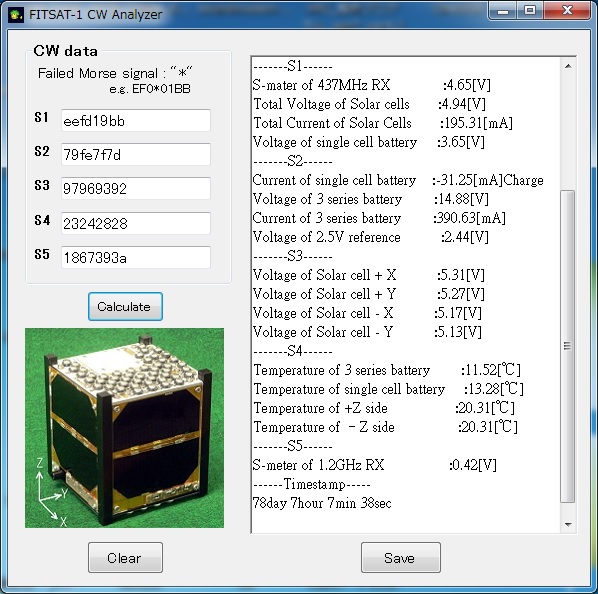
20130707 I have sorted the reports around decay on 4th July:
(1) 3:07(U) JA0CAW received telemetry of FITSAT-1.
(2) 3:09(U) JA1GDE received telemetry of FITSAT-1.
(3) 4:33(U) JR8LWY received only carrier not Morse.
(4) 4:33(U) JR5EPQ received only carrier not Morse.
(5) 4:37(U) JA0CAW could not receive Morse.
(6) 4:38(U) JG6YEW(GS of FITSAT-1) could not receive Morse.
(7) 5:37(U) PU1SLF saw the glow at Campos-RJ-Brazil.
(8) 5:57(U) DK3WN received only carrier not Morse.
(9) 6:08(U) JA6PL could not receive Morse.
(10) 7:20(U) PA3GUO could not copy.
20130704 FITSAT-1 has decayed on 4th July 2013.
The last telemetry was received by JA0CAW at 03:07(UTC).
I appreciate all people who joined our experiments,
helped our operations, and sent me many reports.
20130628 FITSAT-1 will soon decay.
I appreciate if I could receive the last signal report.
The last one will be useful to decide the decay position.
20130622 My presentation at RAST2013 is "Overview and Operations of FITSAT-1 (NIWAKA)".
I have enjoyed RAST2013 at Istanbul, not only the conference but also the
entertainment (52MByte) and the night cruising (1,2,3,4,5,6,7,8,9,10,11).
20130601 I am going abroad from 3rd to 16th June to attend the conference
RAST2013. Probably, I can receive e-mail not everyday.
20130522 Current Flashing Plan:
29th May 04:57:00 - 04:59:00 (UT) Colorado USA (10Hz Green)
From 30th May to 4th June, the temperature of FITSAT increses by full
sunshine. So we can not flash LEDs because of heat problem.
20130518 Current Flashing Plan:
20th May 09:03:30 - 09:05:30 (UT) Colorado USA (10Hz Green)
20130517 The orbiral plane of NIWAKA faces to the sun around 1st June. Niwaka
will be full sunlit, and all temperatures of NIWAKA will increase.
If you could receive the beacon (437.250MHz, CW), the telemetry data
will show an interesting graph.
JA0CAW sent me the graph of NIWAKA illuminatted by the sun around the
full sunlit. The black strip shows the time of shade.
20130515 5.8GHz Problem:
As we didn't download the whole pictures at the deployment, we hesitated
to send a new shutter command. But, this caused the trouble.
In order to generate 2W RF-output, it needs more than 15W DC-input.
As the weight limit of Cubesat, we couldn't attach enough heat sink
for 5.8GHz transmitter. The transmitter sends 20 pictures at a time.
One picture is sent with 2 to 6 sec. So, we placed 5 sec interval
between sending pictures for heat diffusion.
End of this January, we try to download the whole picture again.
The first picture was normal, but the second one continues 16 minutes.
Probably, the picture size became FFFF... because of volatilized memory.
I thought the final IC was burned.
We sent a new shutter command over Australia to refresh picture memory.
The front camera and the rear camera took 20 pictures alternately with
5 sec interval. Then we sent the download command on 6th February.
The 5.8GHz transmitter was not burned, but the transmitter changed to
send only one picture. The first picture by the front camera took the
sun. The latest experiment, we couldn't receive 5.8GHz signal, though
we got acknowledge of download command in 437MHz.
(last picture from NIWAKA on 6th Feb.)
 20130514 Current flashing plan:
20th May 09:03:00 - 09:05:00 (UT) (tentative) Colorado USA (10Hz Green)
20130509 FITSAT Japanese web-page moved to: FITSAT Japan
20130506 Current flashing plan:
8th May 06:46:00 - 06:48:00 (UT) (tentative) Argentina (10Hz Red)
14th May 01:18:00 - 01:20:00 (UT) (tentative) Israel (10Hz Green)
20130414 We have failed to send delay command for 15th Apr. because of thunder.
20130413 I was surprised at:
"JR5EPQ took 4 pictures of 5 flashings (3,5,7,11,13 Apr.) over Japan".
(1) 20h46m25s(JST) 3rd Apr.
(2) 20h47m10s(JST) 3rd Apr.
(3) 01h46m26s(JST) 11th Apr.
(4) 01h05m35s(JST) 13th Apr.
20130411 11th Apr. 23:12:35 - 23:14:35 (UT) (set)
Mr. Shozo Sasaoka took a picture of flashing NIWAKA.
20130514 Current flashing plan:
20th May 09:03:00 - 09:05:00 (UT) (tentative) Colorado USA (10Hz Green)
20130509 FITSAT Japanese web-page moved to: FITSAT Japan
20130506 Current flashing plan:
8th May 06:46:00 - 06:48:00 (UT) (tentative) Argentina (10Hz Red)
14th May 01:18:00 - 01:20:00 (UT) (tentative) Israel (10Hz Green)
20130414 We have failed to send delay command for 15th Apr. because of thunder.
20130413 I was surprised at:
"JR5EPQ took 4 pictures of 5 flashings (3,5,7,11,13 Apr.) over Japan".
(1) 20h46m25s(JST) 3rd Apr.
(2) 20h47m10s(JST) 3rd Apr.
(3) 01h46m26s(JST) 11th Apr.
(4) 01h05m35s(JST) 13th Apr.
20130411 11th Apr. 23:12:35 - 23:14:35 (UT) (set)
Mr. Shozo Sasaoka took a picture of flashing NIWAKA.
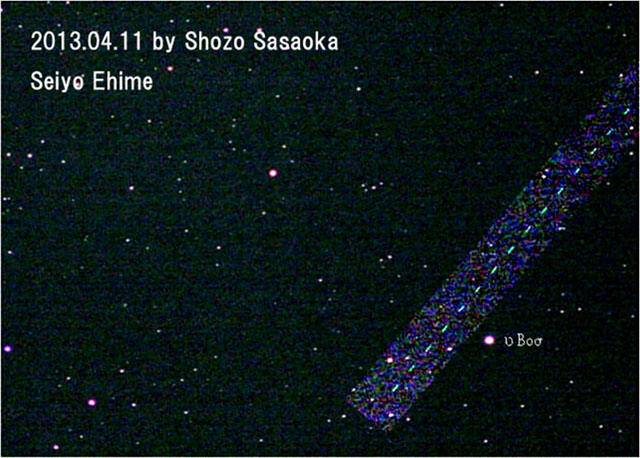 20130410 Current Flashing Plan
11th Apr. 23:13:00 - 23:15:00 (UT) (tentative) Italy (10Hz Green)
15th Apr. 03:31:30 - 03:33:30 (UT) (tentative) NY, Boston (10Hz Green)
20130408 8th Apr. 06:41:24 - 06:43:24 (UT) (set) New York (10Hz Green)
9th Apr. 23:53:28 - 23:55:28 (UT) (set) Italy (10Hz Green)
20130405 Miss Yumiko Kuribayashi took a picture of flashing NIWAKA at Oguni
Kumamoto, Japan on 3rd Apr. She uesd Canon EOS 5D Mark3, Sigma APO
70-200mm F2.8, ISO12800, T=5sec, 200mm, f2.8
20130404 Current Flashing Plan (Time adjusted using latest TLE)
8th Apr. 06:41:00 - 06:43:00 (UT) (tentative) New York (10Hz Green)
9th Apr. 23:53:30 - 23:55:30 (UT) (tentative) Italy (10Hz Green)
11th Apr. 23:13:30 - 23:15:30 (UT) (tentative) Italy (10Hz Green)
15th Apr. 03:32:30 - 03:34:30 (UT) (tentative) New York (10Hz Green)
20130328: Current Flashing Plan (Time will be adjusted using latest TLE):
8th Apr. 06:44:30 - 06:46:30 (UT) (tentative) New York (10Hz Green)
9th Apr. 23:56:00 - 23:58:00 (UT) (tentative) Italy (10Hz Green)
11th Apr. 23:17:00 - 23:19:00 (UT) (tentative) Italy (10Hz Green)
15th Apr. 03:43:00 - 03:45:00 (UT) (tentative) New York (10Hz Green)
20130316: Current Flashing Plan:
17th Mar. 15:37:00 - 15:39:00 (UT) South West Australia (10Hz Red)
18th Mar. 13:03:30 - 13:05:30 (UT) South East Australia (10Hz Red)
(postpone) 3rd Apr. 17:53:00 - 17:55:00 (UT) (tentative)Israel (10Hz Green)
20130312: Current Flashing Plan:
(failed to send command) 16th Mar. 13:35:30 - 13:37:30 (UT) South East Australia (10Hz Red)
17th Mar. 15:37:00 - 15:39:00 (UT) South West Australia (10Hz Red)
3rd Apr. 17:53:00 - 17:55:00 (UT) (tentative)Israel (10Hz Green)
20130306: Current Flashing Plan:
7th Mar. 11:39:30 - 11:41:30 UTC South West Australia (10Hz Red)
(postpone)14th Mar. 02:12:30 - 02:14:30 UTC Israel (10Hz Green)
20130219: Mr. Noriyuki Yamamoto, Hatano Kanagawa Japan took flashing NIWAKA
at 23:52:11 (JST) on 13th Feb. using Kenko SE250N 1200mm, shutter=6sec,
LPS-P2 filter, Canon EOS6D ISO12800.
20130215: Current Flashing Plan:
17th Feb. 06:41:30 - 06:43:30 UTC Buenos Aires Argentina (10Hz Red)
19th Feb. 0r:16:00 - 06:18:00 UTC Mar del Plata Argentina (10Hz Red)
14th Mar. 21:27:30 - 21:29:30 UTC (tentative) Israel (10Hz Green)
20130214: Mr. Yujiro Suzuki, Kimizyu Chiba Japan took flashing NIWAKA last night
using the lens f=180mm F2.8, shutter=6sec, ISO3200x2 body. (very faint)
20130213: Mr. Noriyuki Yamamoto took a picture of flashing NIWAKA
20130410 Current Flashing Plan
11th Apr. 23:13:00 - 23:15:00 (UT) (tentative) Italy (10Hz Green)
15th Apr. 03:31:30 - 03:33:30 (UT) (tentative) NY, Boston (10Hz Green)
20130408 8th Apr. 06:41:24 - 06:43:24 (UT) (set) New York (10Hz Green)
9th Apr. 23:53:28 - 23:55:28 (UT) (set) Italy (10Hz Green)
20130405 Miss Yumiko Kuribayashi took a picture of flashing NIWAKA at Oguni
Kumamoto, Japan on 3rd Apr. She uesd Canon EOS 5D Mark3, Sigma APO
70-200mm F2.8, ISO12800, T=5sec, 200mm, f2.8
20130404 Current Flashing Plan (Time adjusted using latest TLE)
8th Apr. 06:41:00 - 06:43:00 (UT) (tentative) New York (10Hz Green)
9th Apr. 23:53:30 - 23:55:30 (UT) (tentative) Italy (10Hz Green)
11th Apr. 23:13:30 - 23:15:30 (UT) (tentative) Italy (10Hz Green)
15th Apr. 03:32:30 - 03:34:30 (UT) (tentative) New York (10Hz Green)
20130328: Current Flashing Plan (Time will be adjusted using latest TLE):
8th Apr. 06:44:30 - 06:46:30 (UT) (tentative) New York (10Hz Green)
9th Apr. 23:56:00 - 23:58:00 (UT) (tentative) Italy (10Hz Green)
11th Apr. 23:17:00 - 23:19:00 (UT) (tentative) Italy (10Hz Green)
15th Apr. 03:43:00 - 03:45:00 (UT) (tentative) New York (10Hz Green)
20130316: Current Flashing Plan:
17th Mar. 15:37:00 - 15:39:00 (UT) South West Australia (10Hz Red)
18th Mar. 13:03:30 - 13:05:30 (UT) South East Australia (10Hz Red)
(postpone) 3rd Apr. 17:53:00 - 17:55:00 (UT) (tentative)Israel (10Hz Green)
20130312: Current Flashing Plan:
(failed to send command) 16th Mar. 13:35:30 - 13:37:30 (UT) South East Australia (10Hz Red)
17th Mar. 15:37:00 - 15:39:00 (UT) South West Australia (10Hz Red)
3rd Apr. 17:53:00 - 17:55:00 (UT) (tentative)Israel (10Hz Green)
20130306: Current Flashing Plan:
7th Mar. 11:39:30 - 11:41:30 UTC South West Australia (10Hz Red)
(postpone)14th Mar. 02:12:30 - 02:14:30 UTC Israel (10Hz Green)
20130219: Mr. Noriyuki Yamamoto, Hatano Kanagawa Japan took flashing NIWAKA
at 23:52:11 (JST) on 13th Feb. using Kenko SE250N 1200mm, shutter=6sec,
LPS-P2 filter, Canon EOS6D ISO12800.
20130215: Current Flashing Plan:
17th Feb. 06:41:30 - 06:43:30 UTC Buenos Aires Argentina (10Hz Red)
19th Feb. 0r:16:00 - 06:18:00 UTC Mar del Plata Argentina (10Hz Red)
14th Mar. 21:27:30 - 21:29:30 UTC (tentative) Israel (10Hz Green)
20130214: Mr. Yujiro Suzuki, Kimizyu Chiba Japan took flashing NIWAKA last night
using the lens f=180mm F2.8, shutter=6sec, ISO3200x2 body. (very faint)
20130213: Mr. Noriyuki Yamamoto took a picture of flashing NIWAKA
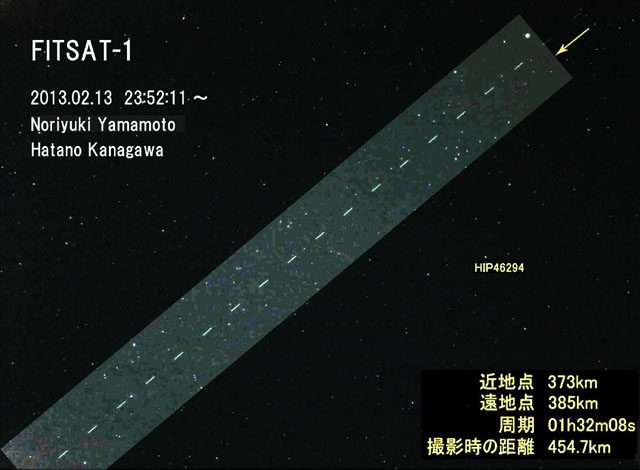 Flashing plan added:
14th Feb. 21:28:00 - 21:30:00 UTC South Europe (10Hz Green)
14th Mar. 21:27:30 - 21:29:30 UTC (tentative) Israel (10Hz Green)
20130212: Flashing plan added:
13th Feb. 22:28:00 - 22:30:00 UTC France, Swiss, Italy,... (10Hz Green)
20130210: We have noticed that NIWAKA increses its rotation speed.
Time of one cycle was 33 sec at 12 Nov. But, now it is 12 sec.
Flashing plan added:
14th Feb. 21:28:00 - 21:30:00 UTC South Europe (10Hz Green)
14th Mar. 21:27:30 - 21:29:30 UTC (tentative) Israel (10Hz Green)
20130212: Flashing plan added:
13th Feb. 22:28:00 - 22:30:00 UTC France, Swiss, Italy,... (10Hz Green)
20130210: We have noticed that NIWAKA increses its rotation speed.
Time of one cycle was 33 sec at 12 Nov. But, now it is 12 sec.
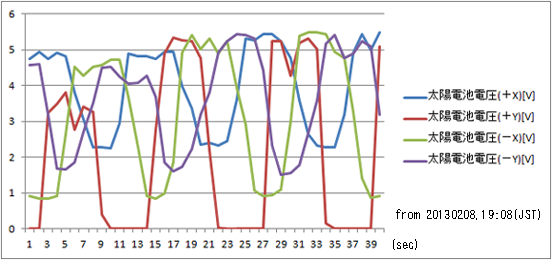
The graph shows the voltage of each solar panel. The changing voltage
shows NIWAKA turns around Z-axis from +X(blue), +Y(red), -X(green),
-Y(purple).
I plot the period(T:blue) and frequency(F:red) from 2nd November 2012.
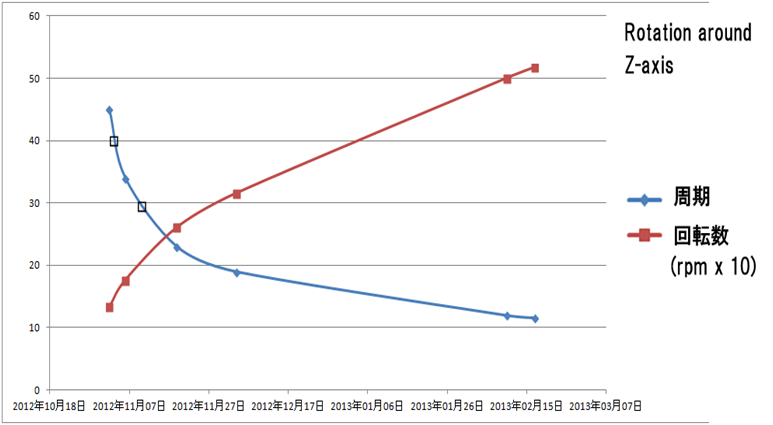
I have no idea on the reason. Let me know if you have any idea.
NIWAKA does not have any mechanism like Crookes radiometer.
Its structure is almost symmetry around Z-axis.
20130208: We have received the optical report from Mark K9GX that
Mr. Don Spain took the picture. We have not confirmed yet.
20130203: Plan changed:
6th Feb. 01:21:30 - 01:23:30 UTC KY,IN,OH,WV,IL USA (10Hz Green)
20130131: Flashing plan added (time will be changed by the latest TLE):
9th Feb. 09:32:30 - 09:34:30 UTC CA, OR USA (10Hz Green)
(changed) 17th Feb. 06:43:30 - 06:45:30 UTC Buenos Aires Argentina (10Hz Red)
(changed) 19th Feb. 06:18:00 - 06:20:00 UTC Mar del Plata Argentina (10Hz Red)
20130129: Flashing plan added (time will be changed by the latest TLE):
1st Feb. 13:53:30 - 13:55:30 UTC Beijing China (10Hz Green)
(changed) 6th Feb. 01:21:00 - 01:23:00 UTC KY,IN,OH,WV,IL USA (10Hz Green)
20130123: Current flashing plan (time will be changed by the latest TLE):
(changed) 1st Feb. 13:51:30 - 13:53:30 UTC Beijing China (10Hz Green)
(changed) 9th Feb. 09:30:00 - 09:32:00 UTC West Coast of USA (10Hz Green)
20130121: We have learned through the experiments of flashing NIWAKA:
1. The night sky mast be dark enough such as to see the milky way.
2. Successful photos use around F4, 400mm lens and ISO12800 camera.
3. Most people noticed their success after took photos and magnified.
This means the camera must be turned to the accurate direction, and
shuttered at exact time. Multiple shutters will be useful.
4. The green beam always turns to the magnetic north, and the red beam
terns to the magnetic south, so the beams do not turn to the ground
around the equator. In order to observe the light, higher latitude
will be good result.
As observing the light is not so easy, we will flash the light on
requests. If you have a plan for observing the light, please advice me
the time and date with your latitude and longitude. Now we have a plan
for flashing at 09:25:00 on 9th Feb. for the west coast of USA.
20130116: Mr. Shozo Sasaoka JR5EPQ took a photo of flashing NIWAKA this morning.
I was surprised because it was taken in north path through high elevation.
The following picture incresed the contrast.
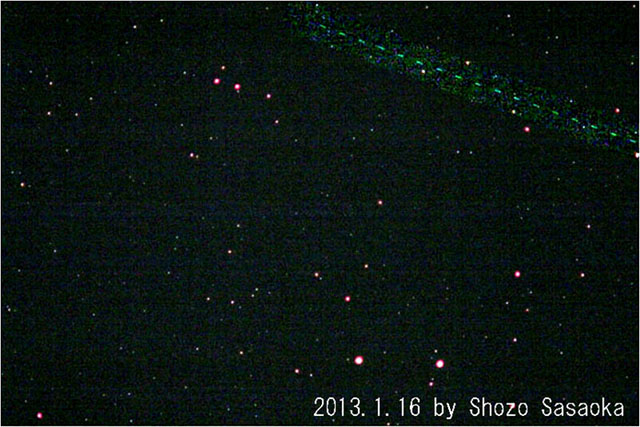
20130113: Miss Jodie Reynolds K6JLR and Mr. Will Bierman took nice photos of
flashing object (f=40mm, 2.5sec exposure),
2013.01.11.13:53:07 2013.01.11.13:53:24
but not confirmed. As it was just before dawn, other satellites were
also bright by sunlit.
20130111: New flashing plan (tentative):
12th Jan. 15:38:00 - 15:40:00 UTC SE Australia (10Hz Red)
14th Jan. 11:02:30 - 11:04:30 UTC Central USA (10Hz Green)
(changed) 15th Jan. 22:26:00 - 22:28:00 UTC Wulmuqi China (10Hz Green)
(changed) 17th Jan. 20:22:48 - 20:24:48 UTC Central India (10Hz Green)
19th Jan. 03:19:00 - 03:21:00 UTC North Italy (10Hz Green)
20130108: I have noticed the followings by Mr. Simone Corbellini's advice:
The orbital plane of NIWAKA was right angle to the Sun around 3rd Jan.
This means NIWAKA appears at dawn or dusk all over the world. Now it
appears before dawn, but NIWAKA may bright by sunlit. So, the flashing
light may not have enough contrast.
Please use this chance as exercise of observation. ISS is closer
to NIWAKA these days, and ISS may bright by sunlit. So, two satellites
may be pictured.
20130106: Flashing LED plan was made by weather forecast:
10th Jan. 23:57:30 - 23:59:30 UTC New Delhi India (10Hz Green)
11th Jan. 13:52:30 - 13:54:30 UTC San Francisco USA (10Hz Green)
(following plan changed by weather problem, see 20130111)
20130104: AMSAT-DL team at Bochum Germany succeeded to generate pictures
from 5.84GHz signal.
New picture which I received from Bochum.
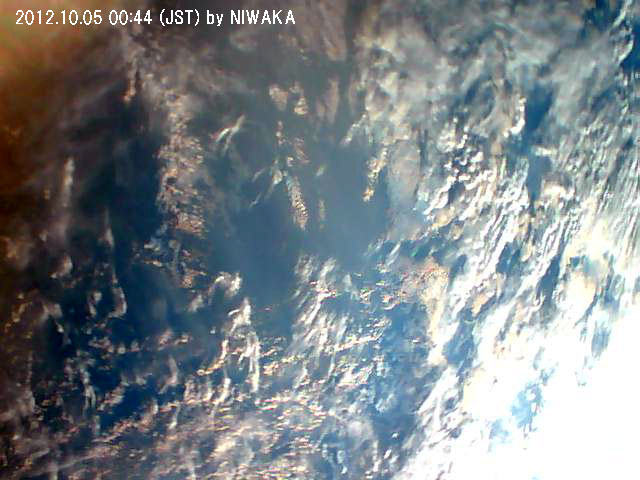
20130101: We have received many "Happy New Year"s. The most interesting one was

 sent by Mr. Janos Tolgyesi HG5APZ.
20121223: Magnitude of flashing NIWAKA is 7 to 8. The light is faint. In order
to observe, Observation Guide for FITSAT-1 will be helpful (in Japanese).
20121222: The 20m dish of Bochum Germany has received 5.84 GHz signal from
NIWAKA. The beam width (3dB) of the dish is only 0.18 deg.
20121219: As the sky is not dark enough by the Moon, we will start the next
experiments of flashing NIWAKA around 7th Jan. 2013.
20121217: New flashing plan:
18 Dec. 05:28:30 - 05:32:30 (UTC) Central-South USA (Morse, Green)
20121215: Flashing plan:
< stop:bad weather> 18 Dec. 05:46:00 - 05:50:00 (UTC) Brazil (Morse, Red)
< stop:bad weather> 19 Dec. 04:47:00 - 04:49:00 (UTC) Equator of South America
(Morse, Green)
19 Dec. 18:33:30 - 18:37:30 (UTC) India (Morse, Green)
20 Dec. 16:21:00 - 16:25:00 (UTC) SE Australia (Morse, Red)
Schedule may be changed.
20121214: Mr. Tadashi Hayashi of Toyama Science Museum took a movie of flashing
NIWAKA (10Hz mode) this morning.
Flashing NIWAKA (movie AVI 490MB)
Flashing NIWAKA (movie MPG 144MB)
20121212c: Flashing plan:
14 Dec. 22:54:30 - 22:56:30 (UTC) South Europe (10 Hz mode)
15 Dec. 08:11:30 - 08:13:30 (UTC) W.Coast of USA (10 Hz mode)
20121212b: Mr. Tsuyoshi Watanabe took a fine picture of NIWAKA this morning.
It flashes 10 Hz mode.
"Watanabe picture"
The following picture incresed the contrast.
sent by Mr. Janos Tolgyesi HG5APZ.
20121223: Magnitude of flashing NIWAKA is 7 to 8. The light is faint. In order
to observe, Observation Guide for FITSAT-1 will be helpful (in Japanese).
20121222: The 20m dish of Bochum Germany has received 5.84 GHz signal from
NIWAKA. The beam width (3dB) of the dish is only 0.18 deg.
20121219: As the sky is not dark enough by the Moon, we will start the next
experiments of flashing NIWAKA around 7th Jan. 2013.
20121217: New flashing plan:
18 Dec. 05:28:30 - 05:32:30 (UTC) Central-South USA (Morse, Green)
20121215: Flashing plan:
< stop:bad weather> 18 Dec. 05:46:00 - 05:50:00 (UTC) Brazil (Morse, Red)
< stop:bad weather> 19 Dec. 04:47:00 - 04:49:00 (UTC) Equator of South America
(Morse, Green)
19 Dec. 18:33:30 - 18:37:30 (UTC) India (Morse, Green)
20 Dec. 16:21:00 - 16:25:00 (UTC) SE Australia (Morse, Red)
Schedule may be changed.
20121214: Mr. Tadashi Hayashi of Toyama Science Museum took a movie of flashing
NIWAKA (10Hz mode) this morning.
Flashing NIWAKA (movie AVI 490MB)
Flashing NIWAKA (movie MPG 144MB)
20121212c: Flashing plan:
14 Dec. 22:54:30 - 22:56:30 (UTC) South Europe (10 Hz mode)
15 Dec. 08:11:30 - 08:13:30 (UTC) W.Coast of USA (10 Hz mode)
20121212b: Mr. Tsuyoshi Watanabe took a fine picture of NIWAKA this morning.
It flashes 10 Hz mode.
"Watanabe picture"
The following picture incresed the contrast.
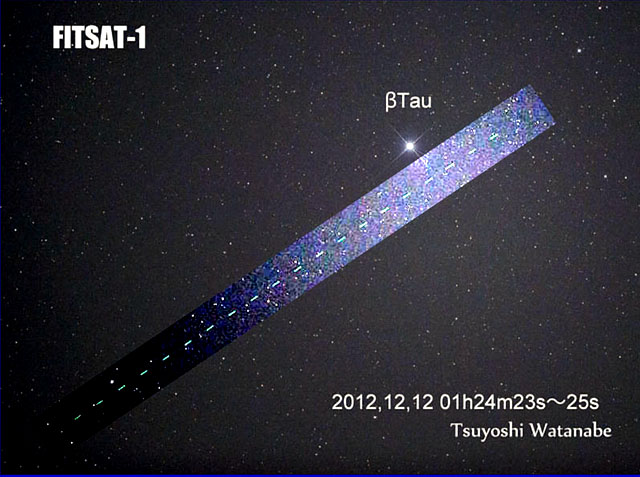 20121212a: We have set the dely command to flash LED over NE of USA.
It will start flashing at 6:14:35 (UTC) on 12 Dec.
20121207: As Christmas Eve is full moon, we start flashing LEDs as:
12 Dec. 6:14:30 (UTC) for US (2 minutes with Morse Code)
13 Dec. 22:10:30 (UTC) for Europe (4 minutes with Morse Code)
The schedule may be changed.
I would like to thank Mr. Simone Corbellini. His web-page will help to
fined NIWAKA and also the observation area for LED-light:
Web Based Observatory
20121205: We have sent QSL(veri-card) for the reports received since the deployment.
I am very sorry the delay. If you could not receive in these 2 weeks,
please let me know. The address may be wrong.
20121202: New pictures we have got successfully until now:
20121212a: We have set the dely command to flash LED over NE of USA.
It will start flashing at 6:14:35 (UTC) on 12 Dec.
20121207: As Christmas Eve is full moon, we start flashing LEDs as:
12 Dec. 6:14:30 (UTC) for US (2 minutes with Morse Code)
13 Dec. 22:10:30 (UTC) for Europe (4 minutes with Morse Code)
The schedule may be changed.
I would like to thank Mr. Simone Corbellini. His web-page will help to
fined NIWAKA and also the observation area for LED-light:
Web Based Observatory
20121205: We have sent QSL(veri-card) for the reports received since the deployment.
I am very sorry the delay. If you could not receive in these 2 weeks,
please let me know. The address may be wrong.
20121202: New pictures we have got successfully until now:
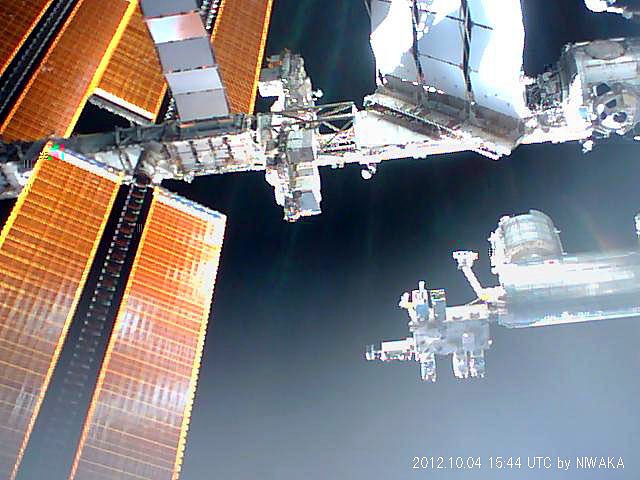
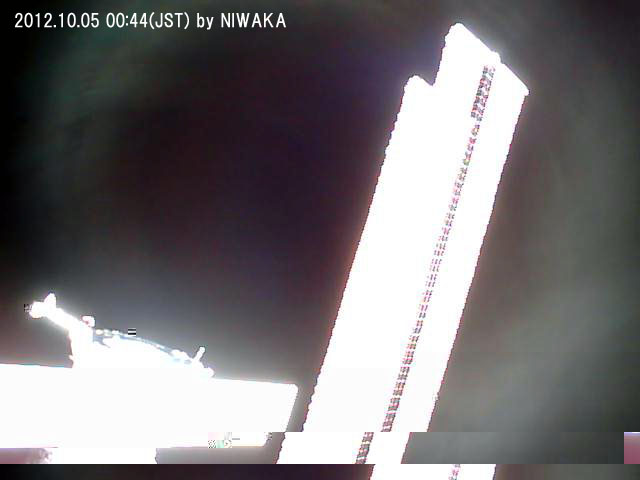
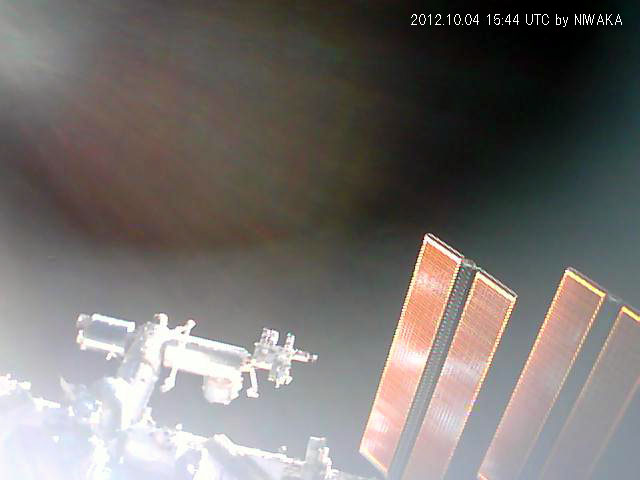
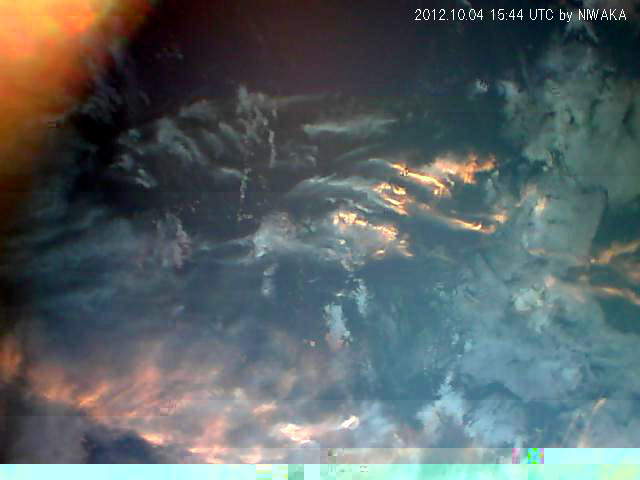
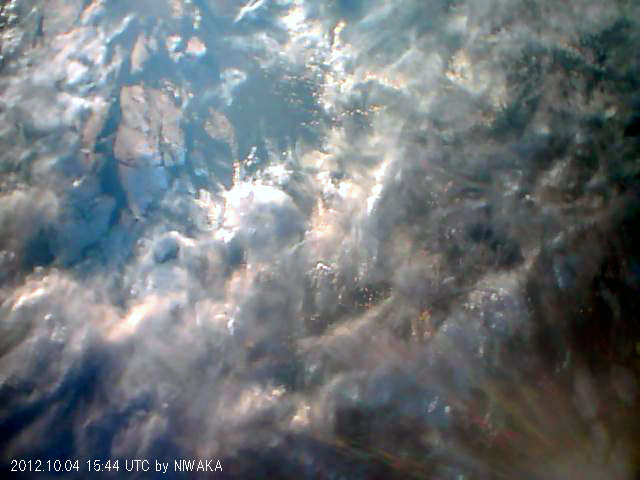
20121201: AMSAT-DL team received the 5.84 GHz signal at Bochum Germany.
20121127: The figure shows temperature changes during 450 minutes, almost 5 cycle
around the world. The blue, red, green, violet lines show 3 cell battery,
single battery, +Z and -Z panels.
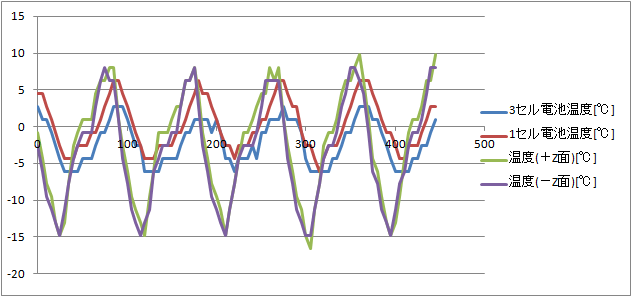
20121126: The first experiment of flashing LEDs was observed in Kurashiki Japan
and Daejeon Korea. We appreciate Mr. Kazuhisa Mishima of Kurashiki
Science Center and Prof. Jun-Ho Oh of Korea Advanced Institute of Science
and Technology. The LEDs were driven in detecting faint light mode.
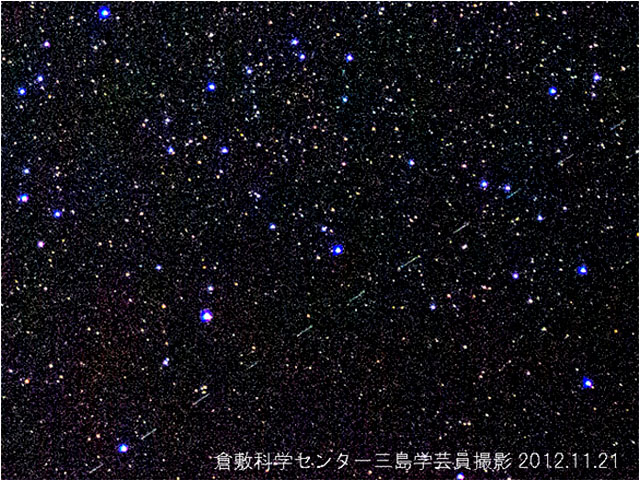
As the following picture is tracked, the line of LED-light is shorten.
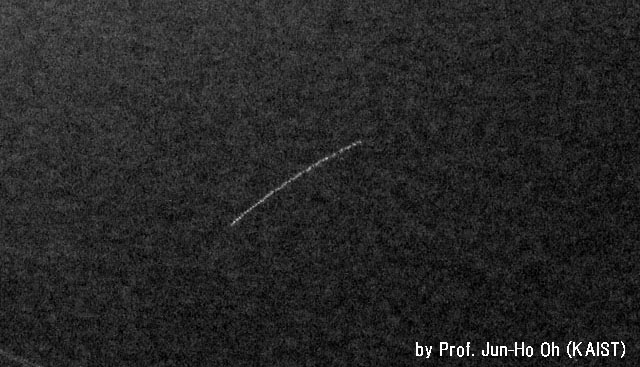
20121117: DF3GJ tries to match the slopes of a sine curve to the audio signal of
beacon. It shows a period of 28.5 sec.
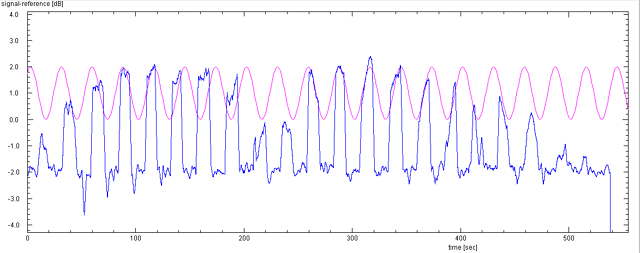
20121115: JA1OGZ received the 5.84GHz signal form NIWAKA with 50cm Dish with
2.5t Helix:
"JA1OGZ received signal"
20121114: This figure shows 5.84GHz spectrum from NIWAKA (measured on the ground).
Though the frequency deviation is +,-,50kHz, the 99% energy spreads
over 415kHz. The 90% energy may be less than 300 kHz.
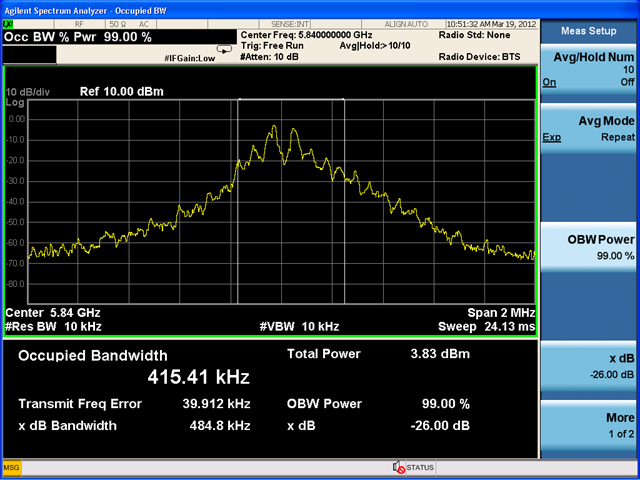
20121113: Old FM-radio (not software radio) will work for 5.84GHz FSK-detector.
It has 300kHz band width. Convert the 5.84GHz frequency to FM-radio.
FM-radio can receive 76MHz-90MHz in Japan, Other countries may be 90-
108MHz. It depends on the country.
Pick up the signal just after FM-discriminator. Change the analog
signal to digital by a comparator.
20121112: New data shows NIWAKA is rotating around Z axis with term of 33 sec.
This data is sampled aroud the equator at dusk.
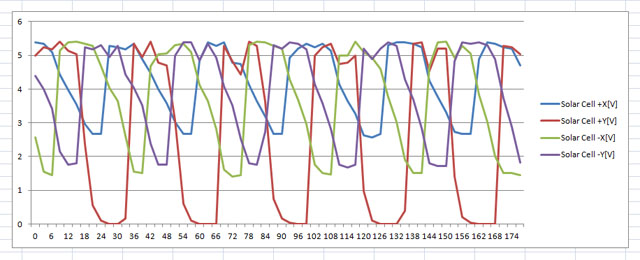
20121111: N1JEZ received the 5.84GHz signal form NIWAKA which was sent above Vermont USA.
"N1JEZ received signal-1"
"N1JEZ received signal-2"
20121110: I thought NIWAKA swings with a period of 40 sec by the signal strength
of beacon (North path). This coincides with the period of swing by magnetic
force on the ground. But, ...
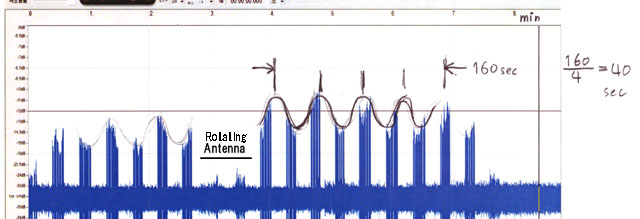
20121109: We receive the latest TLE from:
http://celestrak.com/NORAD/elements/stations.txt
20121107: JA0CAW shows the 5.84Ghz signal from NIWAKA as:
"JA0CAW received signal"
20121106: We will start 5.84GHz transmission experiments of your place.
Please advice the best time for the transmission and also your
latitude and longitude. In the north hemisphere, south path will
be good. As the 5.84GHz patch antenna always faces to the magnetic
north, south hemisphere may be difficult.
The 5.84GHz signal transmits 128 byte packets. Each packet
continues for 12 msec at 115.2kbps. Between packets, there is
a 8 msec blank (only carrier, non-modulated) which is the time for
reading memory. So the packet cycle repeats with a 20 msec (12msec
+ 8 msec) period. An FM detector with therefore generate a 50 Hz
audio signal (1/20msec).
NIWAKA sends 20 pictures at a time in around 2 to 3 minutes. There
is a 5 second interval (with no 5.84GHz signal) between pictures
due to a heating problem in the final IC. Each picture takes 2-6
seconds to transmit. If a picture is only black space, it takes
less than 2 seconds.
We ourselves have not yet succeeded in receiving the whole set of
20 pictures. We would appreciate it if you are able to receive
these pictures. Data errors have damaged the images as received
here, but those damaged images indicate that there are two more
pictures of the ISS.
Receiving a 5.84GHz signal from a satellite is itself difficult,
so we would appreciate a report of any detection or reception of
this signal.
20121104: Probably, a part of another satellite F-1.
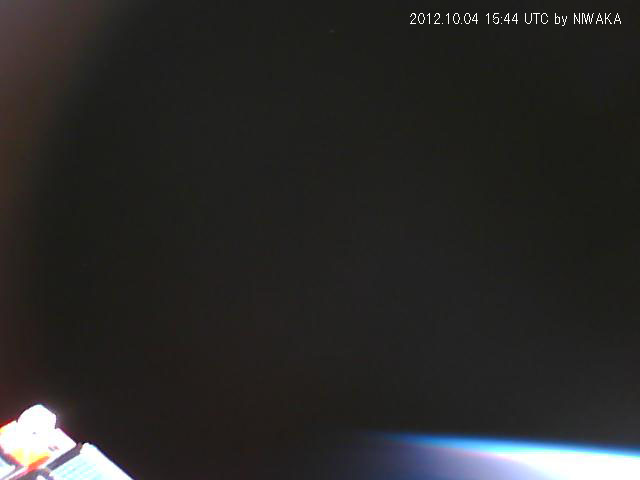
20121027: New pictures from NIWAKA by 5.84GHz.
(rear camera)
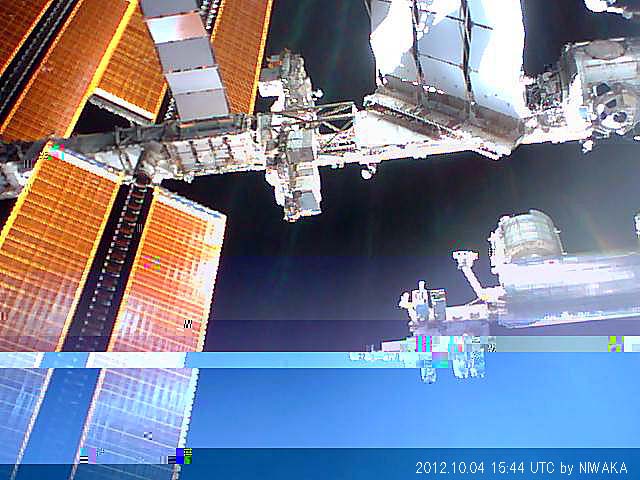
(front camera)
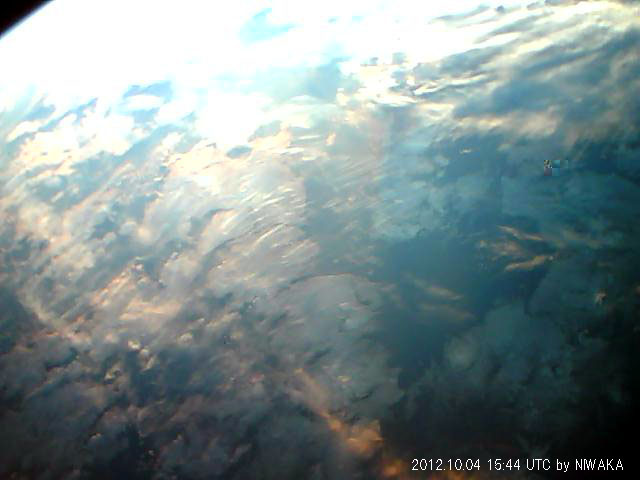
20121025: Flashing LED may be good for Christmas Eve.
20121023: Second picture from NIWAKA by 5.84GHz. --> 20121027
NIWAKA was deployed around Hawaii.
20121021: Flashing LED test had not started yet.
It will start after down-loading all the 20 pictures at the deployment.
20121020: First picture from NIWAKA by 5.84GHz

20121018: JA1OGZ received 5.8GHz signal.
20121018: JA0CAW received 5.8GHz signal.
20121016: We received temperatures, voltages and currents stored in response to
remote commands. These signals (437.445MHz, AX.25 packet 1200bps) are
replies to remote commands. They can be received only local area.
...
20121006: We have received many signal and telemetry reports.
All reports indicate that FITSAT-1 has started working.
20121005: FITSAT-1 was deployed from ISS at 15:44 on 4th October (UTC).

 20130514 Current flashing plan:
20th May 09:03:00 - 09:05:00 (UT) (tentative) Colorado USA (10Hz Green)
20130509 FITSAT Japanese web-page moved to: FITSAT Japan
20130506 Current flashing plan:
8th May 06:46:00 - 06:48:00 (UT) (tentative) Argentina (10Hz Red)
14th May 01:18:00 - 01:20:00 (UT) (tentative) Israel (10Hz Green)
20130414 We have failed to send delay command for 15th Apr. because of thunder.
20130413 I was surprised at:
"JR5EPQ took 4 pictures of 5 flashings (3,5,7,11,13 Apr.) over Japan".
(1) 20h46m25s(JST) 3rd Apr.
(2) 20h47m10s(JST) 3rd Apr.
(3) 01h46m26s(JST) 11th Apr.
(4) 01h05m35s(JST) 13th Apr.
20130411 11th Apr. 23:12:35 - 23:14:35 (UT) (set)
Mr. Shozo Sasaoka took a picture of flashing NIWAKA.
20130514 Current flashing plan:
20th May 09:03:00 - 09:05:00 (UT) (tentative) Colorado USA (10Hz Green)
20130509 FITSAT Japanese web-page moved to: FITSAT Japan
20130506 Current flashing plan:
8th May 06:46:00 - 06:48:00 (UT) (tentative) Argentina (10Hz Red)
14th May 01:18:00 - 01:20:00 (UT) (tentative) Israel (10Hz Green)
20130414 We have failed to send delay command for 15th Apr. because of thunder.
20130413 I was surprised at:
"JR5EPQ took 4 pictures of 5 flashings (3,5,7,11,13 Apr.) over Japan".
(1) 20h46m25s(JST) 3rd Apr.
(2) 20h47m10s(JST) 3rd Apr.
(3) 01h46m26s(JST) 11th Apr.
(4) 01h05m35s(JST) 13th Apr.
20130411 11th Apr. 23:12:35 - 23:14:35 (UT) (set)
Mr. Shozo Sasaoka took a picture of flashing NIWAKA.
 20130410 Current Flashing Plan
11th Apr. 23:13:00 - 23:15:00 (UT) (tentative) Italy (10Hz Green)
15th Apr. 03:31:30 - 03:33:30 (UT) (tentative) NY, Boston (10Hz Green)
20130408 8th Apr. 06:41:24 - 06:43:24 (UT) (set) New York (10Hz Green)
9th Apr. 23:53:28 - 23:55:28 (UT) (set) Italy (10Hz Green)
20130405 Miss Yumiko Kuribayashi took a picture of flashing NIWAKA at Oguni
Kumamoto, Japan on 3rd Apr. She uesd Canon EOS 5D Mark3, Sigma APO
70-200mm F2.8, ISO12800, T=5sec, 200mm, f2.8
20130404 Current Flashing Plan (Time adjusted using latest TLE)
8th Apr. 06:41:00 - 06:43:00 (UT) (tentative) New York (10Hz Green)
9th Apr. 23:53:30 - 23:55:30 (UT) (tentative) Italy (10Hz Green)
11th Apr. 23:13:30 - 23:15:30 (UT) (tentative) Italy (10Hz Green)
15th Apr. 03:32:30 - 03:34:30 (UT) (tentative) New York (10Hz Green)
20130328: Current Flashing Plan (Time will be adjusted using latest TLE):
8th Apr. 06:44:30 - 06:46:30 (UT) (tentative) New York (10Hz Green)
9th Apr. 23:56:00 - 23:58:00 (UT) (tentative) Italy (10Hz Green)
11th Apr. 23:17:00 - 23:19:00 (UT) (tentative) Italy (10Hz Green)
15th Apr. 03:43:00 - 03:45:00 (UT) (tentative) New York (10Hz Green)
20130316: Current Flashing Plan:
17th Mar. 15:37:00 - 15:39:00 (UT) South West Australia (10Hz Red)
18th Mar. 13:03:30 - 13:05:30 (UT) South East Australia (10Hz Red)
(postpone) 3rd Apr. 17:53:00 - 17:55:00 (UT) (tentative)Israel (10Hz Green)
20130312: Current Flashing Plan:
(failed to send command) 16th Mar. 13:35:30 - 13:37:30 (UT) South East Australia (10Hz Red)
17th Mar. 15:37:00 - 15:39:00 (UT) South West Australia (10Hz Red)
3rd Apr. 17:53:00 - 17:55:00 (UT) (tentative)Israel (10Hz Green)
20130306: Current Flashing Plan:
7th Mar. 11:39:30 - 11:41:30 UTC South West Australia (10Hz Red)
(postpone)14th Mar. 02:12:30 - 02:14:30 UTC Israel (10Hz Green)
20130219: Mr. Noriyuki Yamamoto, Hatano Kanagawa Japan took flashing NIWAKA
at 23:52:11 (JST) on 13th Feb. using Kenko SE250N 1200mm, shutter=6sec,
LPS-P2 filter, Canon EOS6D ISO12800.
20130215: Current Flashing Plan:
17th Feb. 06:41:30 - 06:43:30 UTC Buenos Aires Argentina (10Hz Red)
19th Feb. 0r:16:00 - 06:18:00 UTC Mar del Plata Argentina (10Hz Red)
14th Mar. 21:27:30 - 21:29:30 UTC (tentative) Israel (10Hz Green)
20130214: Mr. Yujiro Suzuki, Kimizyu Chiba Japan took flashing NIWAKA last night
using the lens f=180mm F2.8, shutter=6sec, ISO3200x2 body. (very faint)
20130213: Mr. Noriyuki Yamamoto took a picture of flashing NIWAKA
20130410 Current Flashing Plan
11th Apr. 23:13:00 - 23:15:00 (UT) (tentative) Italy (10Hz Green)
15th Apr. 03:31:30 - 03:33:30 (UT) (tentative) NY, Boston (10Hz Green)
20130408 8th Apr. 06:41:24 - 06:43:24 (UT) (set) New York (10Hz Green)
9th Apr. 23:53:28 - 23:55:28 (UT) (set) Italy (10Hz Green)
20130405 Miss Yumiko Kuribayashi took a picture of flashing NIWAKA at Oguni
Kumamoto, Japan on 3rd Apr. She uesd Canon EOS 5D Mark3, Sigma APO
70-200mm F2.8, ISO12800, T=5sec, 200mm, f2.8
20130404 Current Flashing Plan (Time adjusted using latest TLE)
8th Apr. 06:41:00 - 06:43:00 (UT) (tentative) New York (10Hz Green)
9th Apr. 23:53:30 - 23:55:30 (UT) (tentative) Italy (10Hz Green)
11th Apr. 23:13:30 - 23:15:30 (UT) (tentative) Italy (10Hz Green)
15th Apr. 03:32:30 - 03:34:30 (UT) (tentative) New York (10Hz Green)
20130328: Current Flashing Plan (Time will be adjusted using latest TLE):
8th Apr. 06:44:30 - 06:46:30 (UT) (tentative) New York (10Hz Green)
9th Apr. 23:56:00 - 23:58:00 (UT) (tentative) Italy (10Hz Green)
11th Apr. 23:17:00 - 23:19:00 (UT) (tentative) Italy (10Hz Green)
15th Apr. 03:43:00 - 03:45:00 (UT) (tentative) New York (10Hz Green)
20130316: Current Flashing Plan:
17th Mar. 15:37:00 - 15:39:00 (UT) South West Australia (10Hz Red)
18th Mar. 13:03:30 - 13:05:30 (UT) South East Australia (10Hz Red)
(postpone) 3rd Apr. 17:53:00 - 17:55:00 (UT) (tentative)Israel (10Hz Green)
20130312: Current Flashing Plan:
(failed to send command) 16th Mar. 13:35:30 - 13:37:30 (UT) South East Australia (10Hz Red)
17th Mar. 15:37:00 - 15:39:00 (UT) South West Australia (10Hz Red)
3rd Apr. 17:53:00 - 17:55:00 (UT) (tentative)Israel (10Hz Green)
20130306: Current Flashing Plan:
7th Mar. 11:39:30 - 11:41:30 UTC South West Australia (10Hz Red)
(postpone)14th Mar. 02:12:30 - 02:14:30 UTC Israel (10Hz Green)
20130219: Mr. Noriyuki Yamamoto, Hatano Kanagawa Japan took flashing NIWAKA
at 23:52:11 (JST) on 13th Feb. using Kenko SE250N 1200mm, shutter=6sec,
LPS-P2 filter, Canon EOS6D ISO12800.
20130215: Current Flashing Plan:
17th Feb. 06:41:30 - 06:43:30 UTC Buenos Aires Argentina (10Hz Red)
19th Feb. 0r:16:00 - 06:18:00 UTC Mar del Plata Argentina (10Hz Red)
14th Mar. 21:27:30 - 21:29:30 UTC (tentative) Israel (10Hz Green)
20130214: Mr. Yujiro Suzuki, Kimizyu Chiba Japan took flashing NIWAKA last night
using the lens f=180mm F2.8, shutter=6sec, ISO3200x2 body. (very faint)
20130213: Mr. Noriyuki Yamamoto took a picture of flashing NIWAKA
 Flashing plan added:
14th Feb. 21:28:00 - 21:30:00 UTC South Europe (10Hz Green)
14th Mar. 21:27:30 - 21:29:30 UTC (tentative) Israel (10Hz Green)
20130212: Flashing plan added:
13th Feb. 22:28:00 - 22:30:00 UTC France, Swiss, Italy,... (10Hz Green)
20130210: We have noticed that NIWAKA increses its rotation speed.
Time of one cycle was 33 sec at 12 Nov. But, now it is 12 sec.
Flashing plan added:
14th Feb. 21:28:00 - 21:30:00 UTC South Europe (10Hz Green)
14th Mar. 21:27:30 - 21:29:30 UTC (tentative) Israel (10Hz Green)
20130212: Flashing plan added:
13th Feb. 22:28:00 - 22:30:00 UTC France, Swiss, Italy,... (10Hz Green)
20130210: We have noticed that NIWAKA increses its rotation speed.
Time of one cycle was 33 sec at 12 Nov. But, now it is 12 sec.





 sent by Mr. Janos Tolgyesi HG5APZ.
20121223: Magnitude of flashing NIWAKA is 7 to 8. The light is faint. In order
to observe, Observation Guide for FITSAT-1 will be helpful (in Japanese).
20121222: The 20m dish of Bochum Germany has received 5.84 GHz signal from
NIWAKA. The beam width (3dB) of the dish is only 0.18 deg.
20121219: As the sky is not dark enough by the Moon, we will start the next
experiments of flashing NIWAKA around 7th Jan. 2013.
20121217: New flashing plan:
18 Dec. 05:28:30 - 05:32:30 (UTC) Central-South USA (Morse, Green)
20121215: Flashing plan:
< stop:bad weather> 18 Dec. 05:46:00 - 05:50:00 (UTC) Brazil (Morse, Red)
< stop:bad weather> 19 Dec. 04:47:00 - 04:49:00 (UTC) Equator of South America
(Morse, Green)
19 Dec. 18:33:30 - 18:37:30 (UTC) India (Morse, Green)
20 Dec. 16:21:00 - 16:25:00 (UTC) SE Australia (Morse, Red)
Schedule may be changed.
20121214: Mr. Tadashi Hayashi of Toyama Science Museum took a movie of flashing
NIWAKA (10Hz mode) this morning.
Flashing NIWAKA (movie AVI 490MB)
Flashing NIWAKA (movie MPG 144MB)
20121212c: Flashing plan:
14 Dec. 22:54:30 - 22:56:30 (UTC) South Europe (10 Hz mode)
15 Dec. 08:11:30 - 08:13:30 (UTC) W.Coast of USA (10 Hz mode)
20121212b: Mr. Tsuyoshi Watanabe took a fine picture of NIWAKA this morning.
It flashes 10 Hz mode.
"Watanabe picture"
The following picture incresed the contrast.
sent by Mr. Janos Tolgyesi HG5APZ.
20121223: Magnitude of flashing NIWAKA is 7 to 8. The light is faint. In order
to observe, Observation Guide for FITSAT-1 will be helpful (in Japanese).
20121222: The 20m dish of Bochum Germany has received 5.84 GHz signal from
NIWAKA. The beam width (3dB) of the dish is only 0.18 deg.
20121219: As the sky is not dark enough by the Moon, we will start the next
experiments of flashing NIWAKA around 7th Jan. 2013.
20121217: New flashing plan:
18 Dec. 05:28:30 - 05:32:30 (UTC) Central-South USA (Morse, Green)
20121215: Flashing plan:
< stop:bad weather> 18 Dec. 05:46:00 - 05:50:00 (UTC) Brazil (Morse, Red)
< stop:bad weather> 19 Dec. 04:47:00 - 04:49:00 (UTC) Equator of South America
(Morse, Green)
19 Dec. 18:33:30 - 18:37:30 (UTC) India (Morse, Green)
20 Dec. 16:21:00 - 16:25:00 (UTC) SE Australia (Morse, Red)
Schedule may be changed.
20121214: Mr. Tadashi Hayashi of Toyama Science Museum took a movie of flashing
NIWAKA (10Hz mode) this morning.
Flashing NIWAKA (movie AVI 490MB)
Flashing NIWAKA (movie MPG 144MB)
20121212c: Flashing plan:
14 Dec. 22:54:30 - 22:56:30 (UTC) South Europe (10 Hz mode)
15 Dec. 08:11:30 - 08:13:30 (UTC) W.Coast of USA (10 Hz mode)
20121212b: Mr. Tsuyoshi Watanabe took a fine picture of NIWAKA this morning.
It flashes 10 Hz mode.
"Watanabe picture"
The following picture incresed the contrast.
 20121212a: We have set the dely command to flash LED over NE of USA.
It will start flashing at 6:14:35 (UTC) on 12 Dec.
20121207: As Christmas Eve is full moon, we start flashing LEDs as:
12 Dec. 6:14:30 (UTC) for US (2 minutes with Morse Code)
13 Dec. 22:10:30 (UTC) for Europe (4 minutes with Morse Code)
The schedule may be changed.
I would like to thank Mr. Simone Corbellini. His web-page will help to
fined NIWAKA and also the observation area for LED-light:
Web Based Observatory
20121205: We have sent QSL(veri-card) for the reports received since the deployment.
I am very sorry the delay. If you could not receive in these 2 weeks,
please let me know. The address may be wrong.
20121202: New pictures we have got successfully until now:
20121212a: We have set the dely command to flash LED over NE of USA.
It will start flashing at 6:14:35 (UTC) on 12 Dec.
20121207: As Christmas Eve is full moon, we start flashing LEDs as:
12 Dec. 6:14:30 (UTC) for US (2 minutes with Morse Code)
13 Dec. 22:10:30 (UTC) for Europe (4 minutes with Morse Code)
The schedule may be changed.
I would like to thank Mr. Simone Corbellini. His web-page will help to
fined NIWAKA and also the observation area for LED-light:
Web Based Observatory
20121205: We have sent QSL(veri-card) for the reports received since the deployment.
I am very sorry the delay. If you could not receive in these 2 weeks,
please let me know. The address may be wrong.
20121202: New pictures we have got successfully until now:
















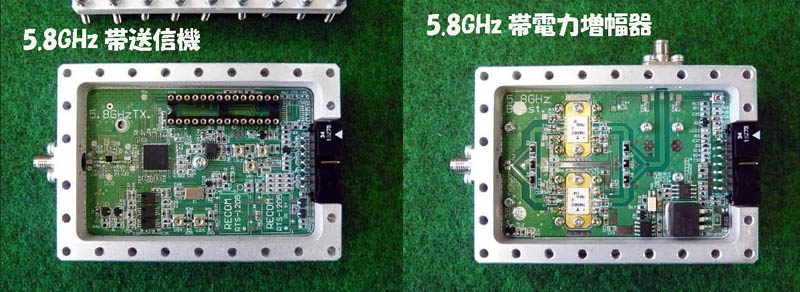
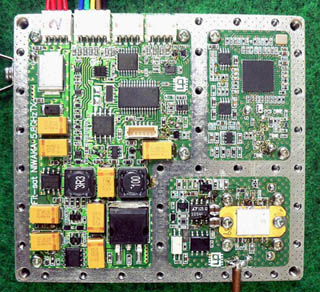

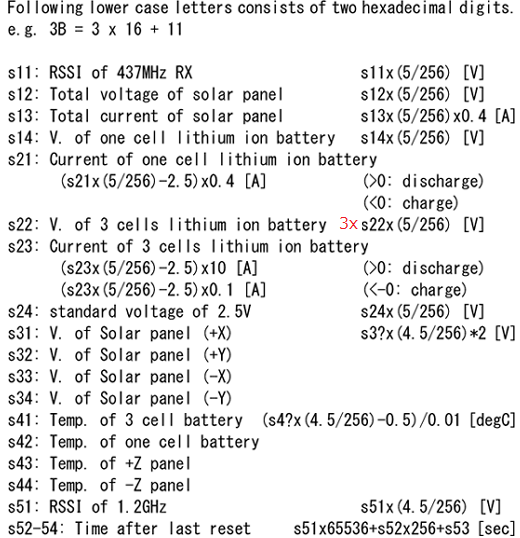

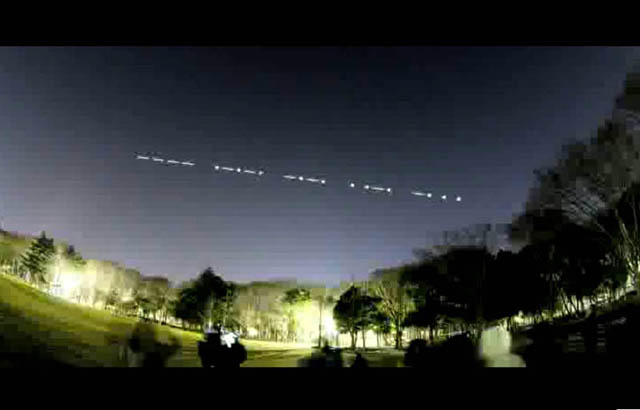
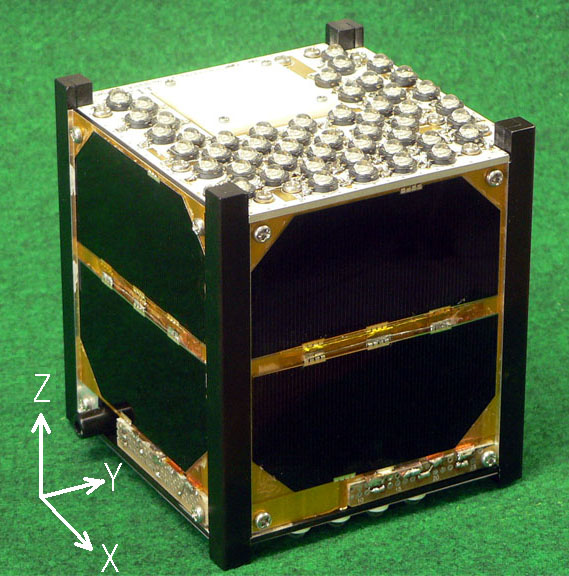
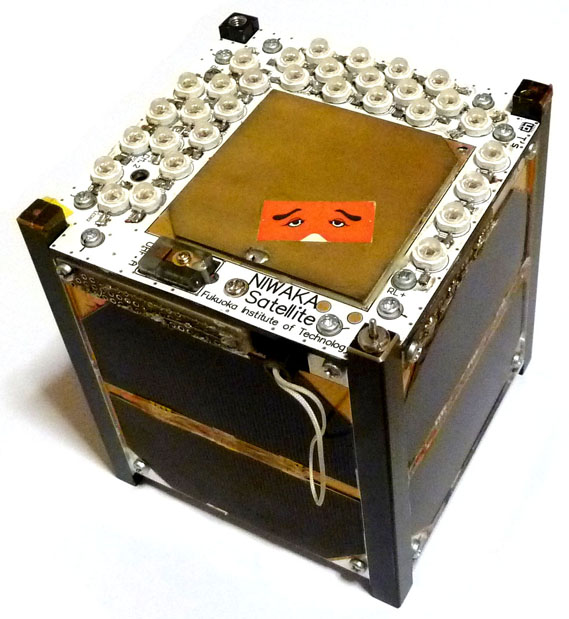
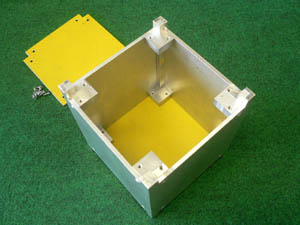
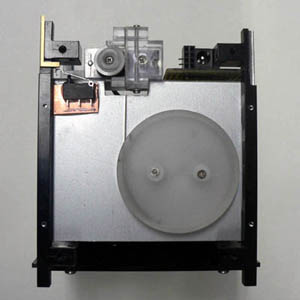
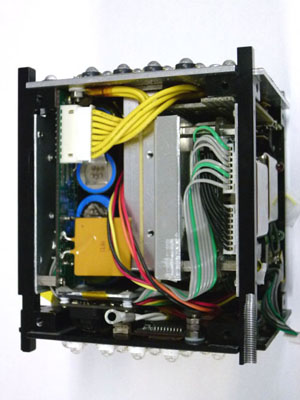
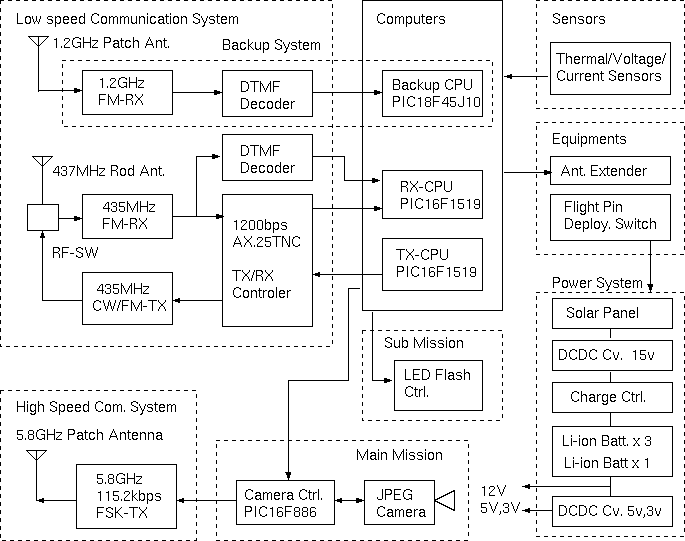
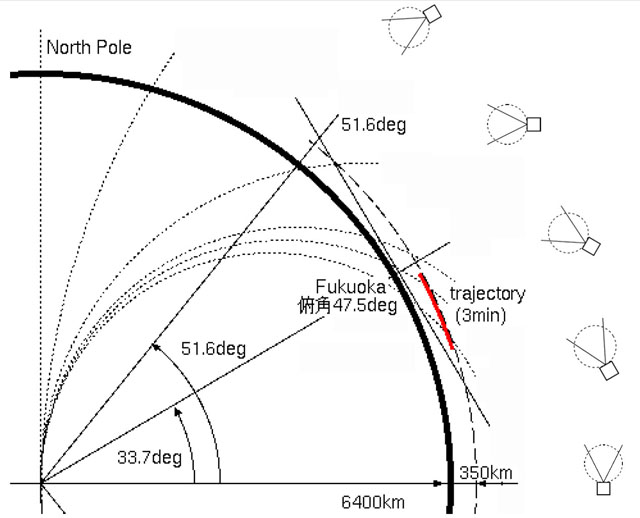

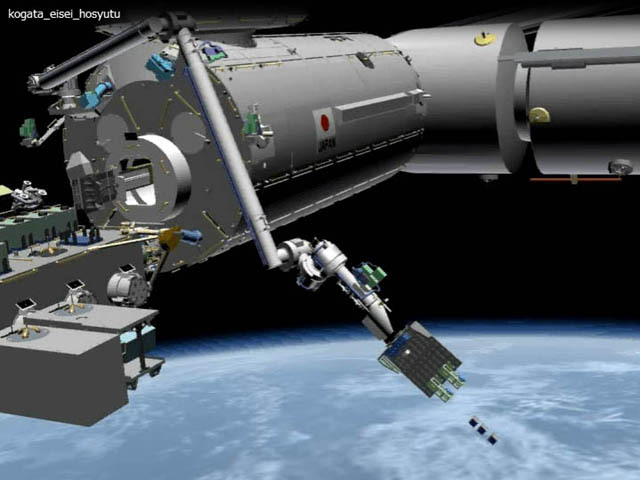
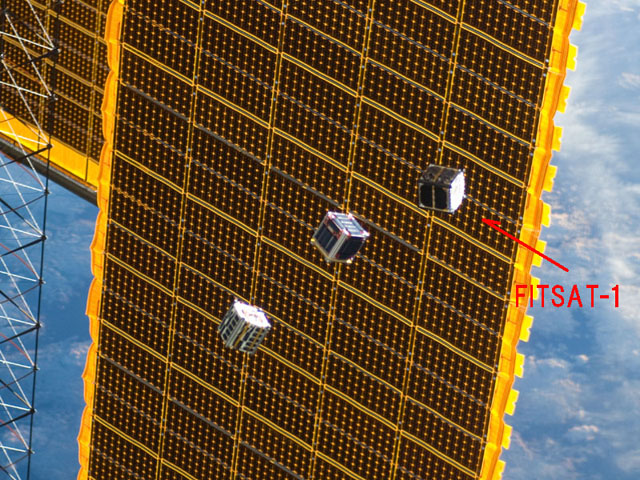
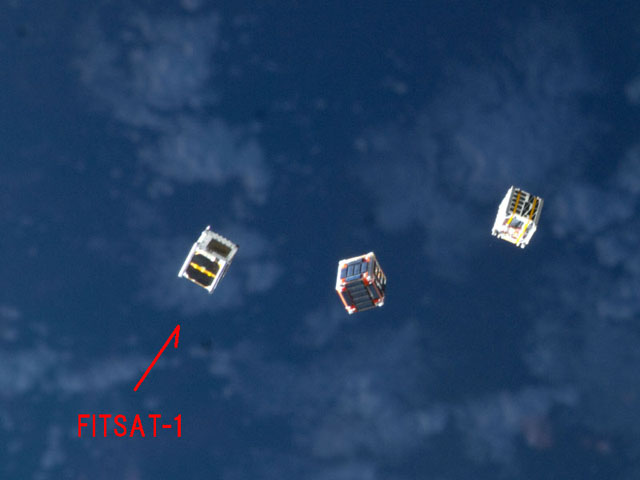
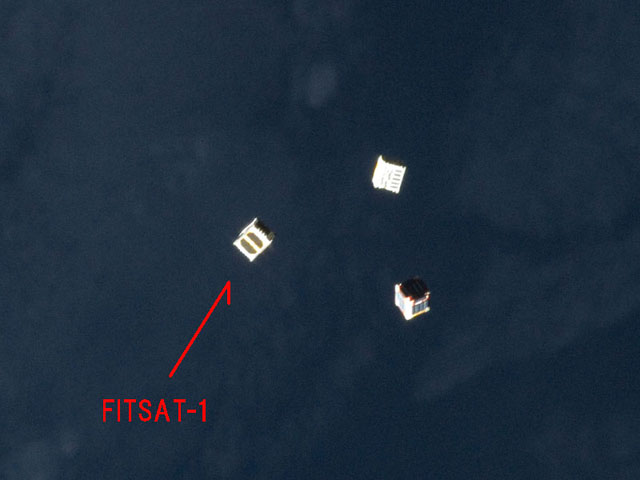
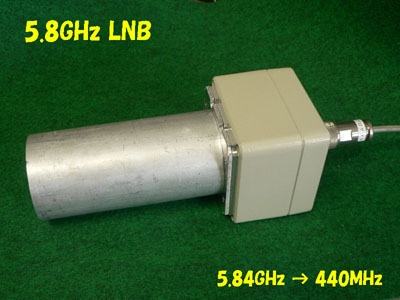
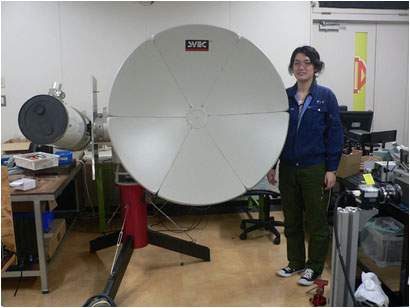
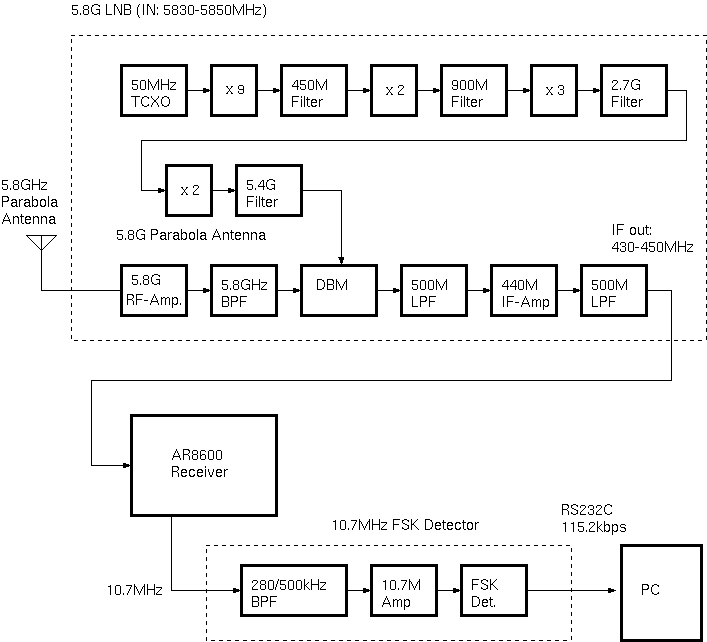

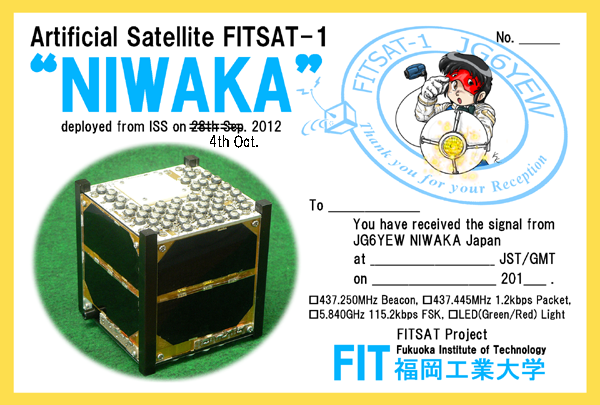
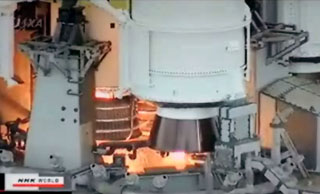




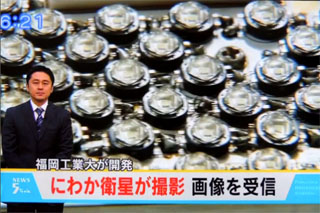
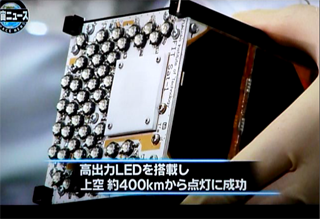

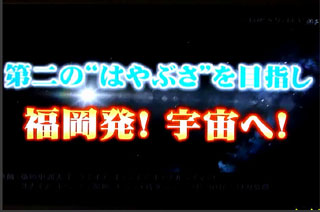

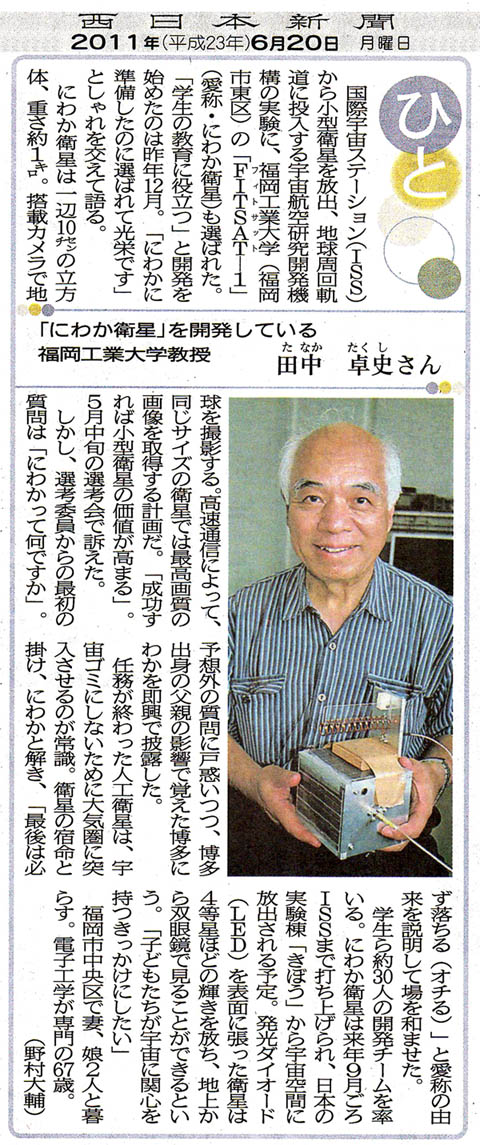
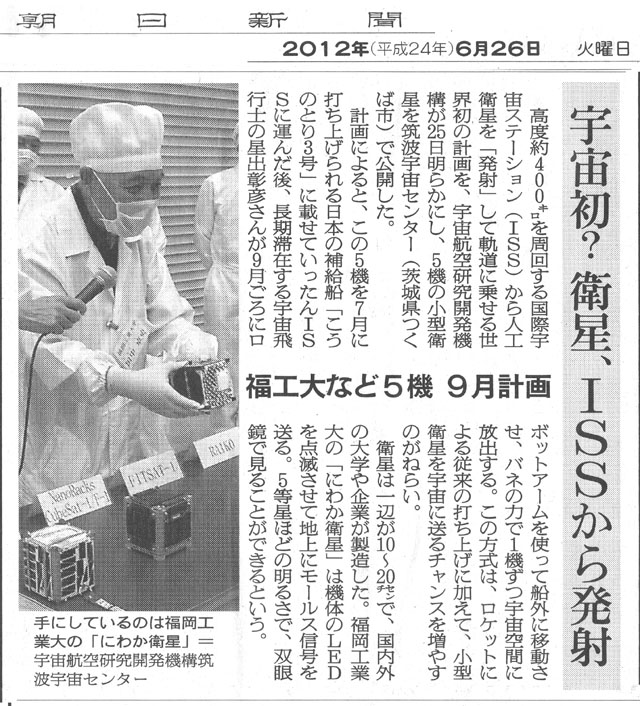
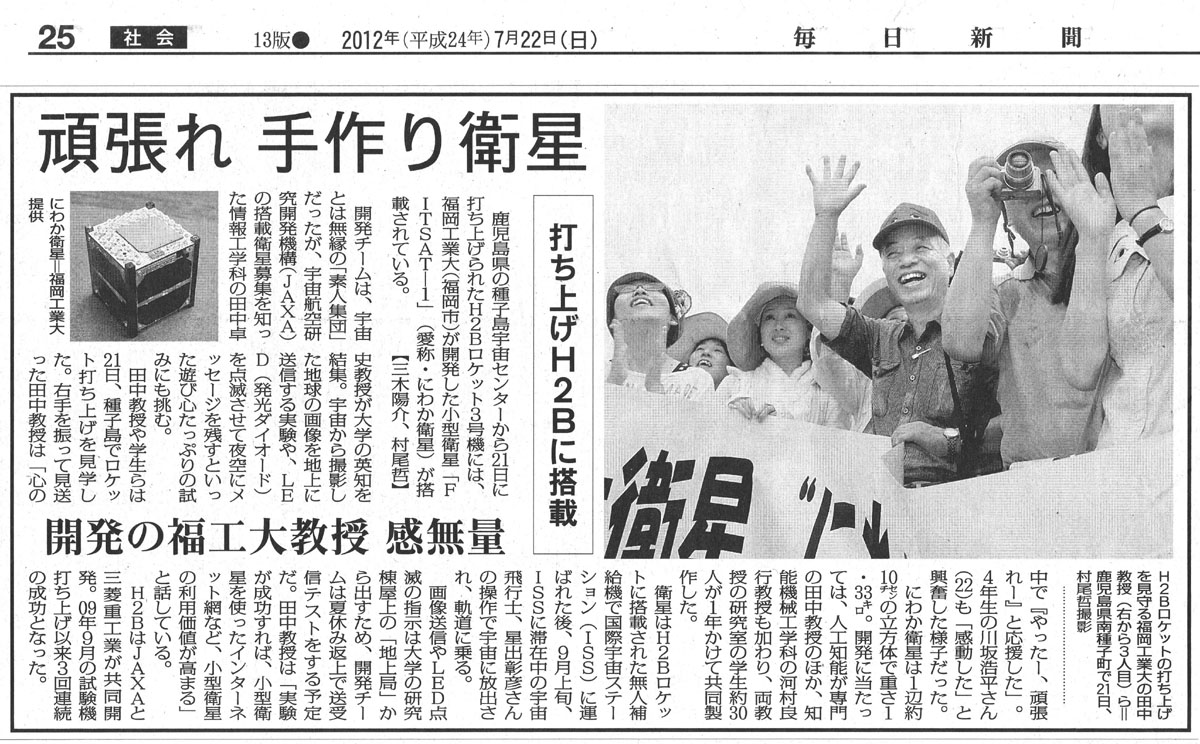
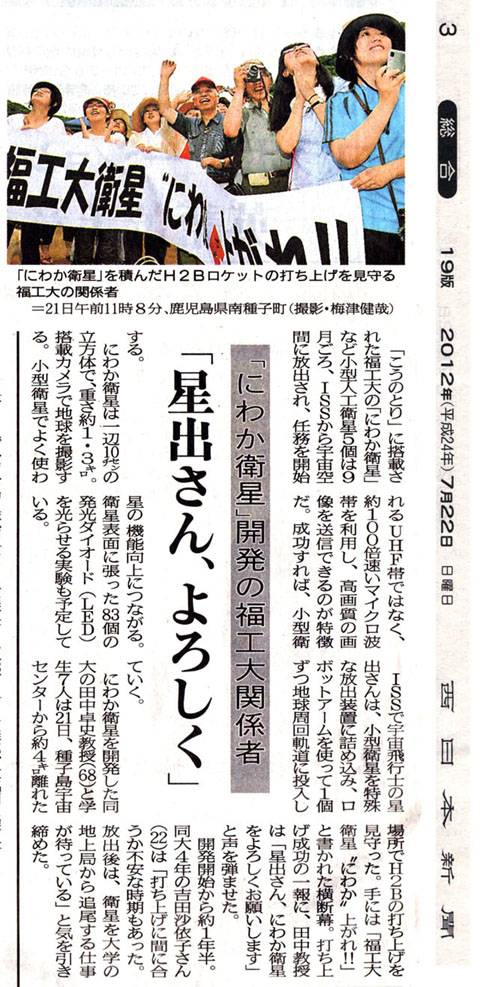
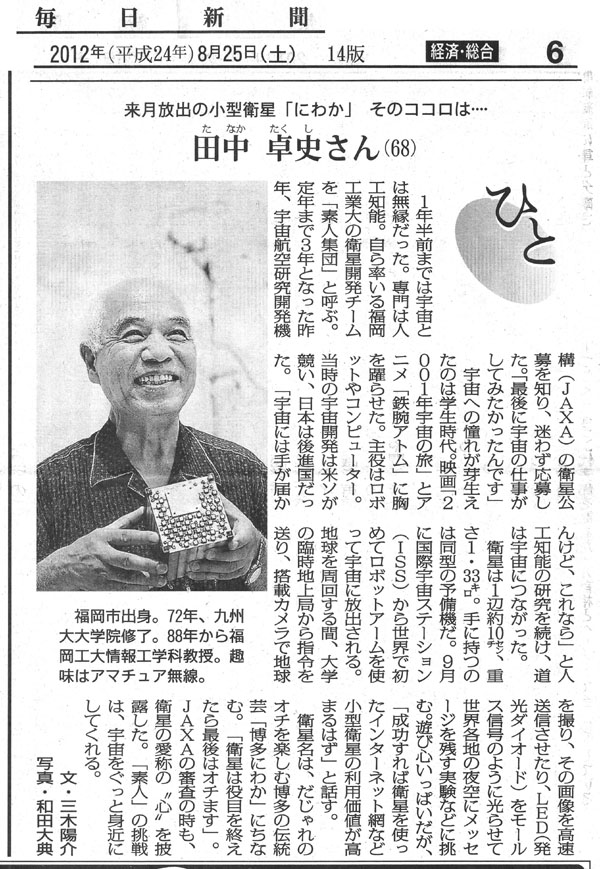
 _home
_home